Studio Electronics Charcot Circles Eurorack Sequencer Review
The Charcot Circles Eurorack module is a sequencer that offers a lot in a pint-sized package. Dave Gale discovers how hypnotic a sequencer can become… Details Manufacturer Studio Electronics Price £299 (RRP) Contact MSL Professional – 0207 118 0133 Email contact@mslpro.co.uk – studioelectronics.com Sequencers are a pretty essential part of modular life, so the appeal of a […]
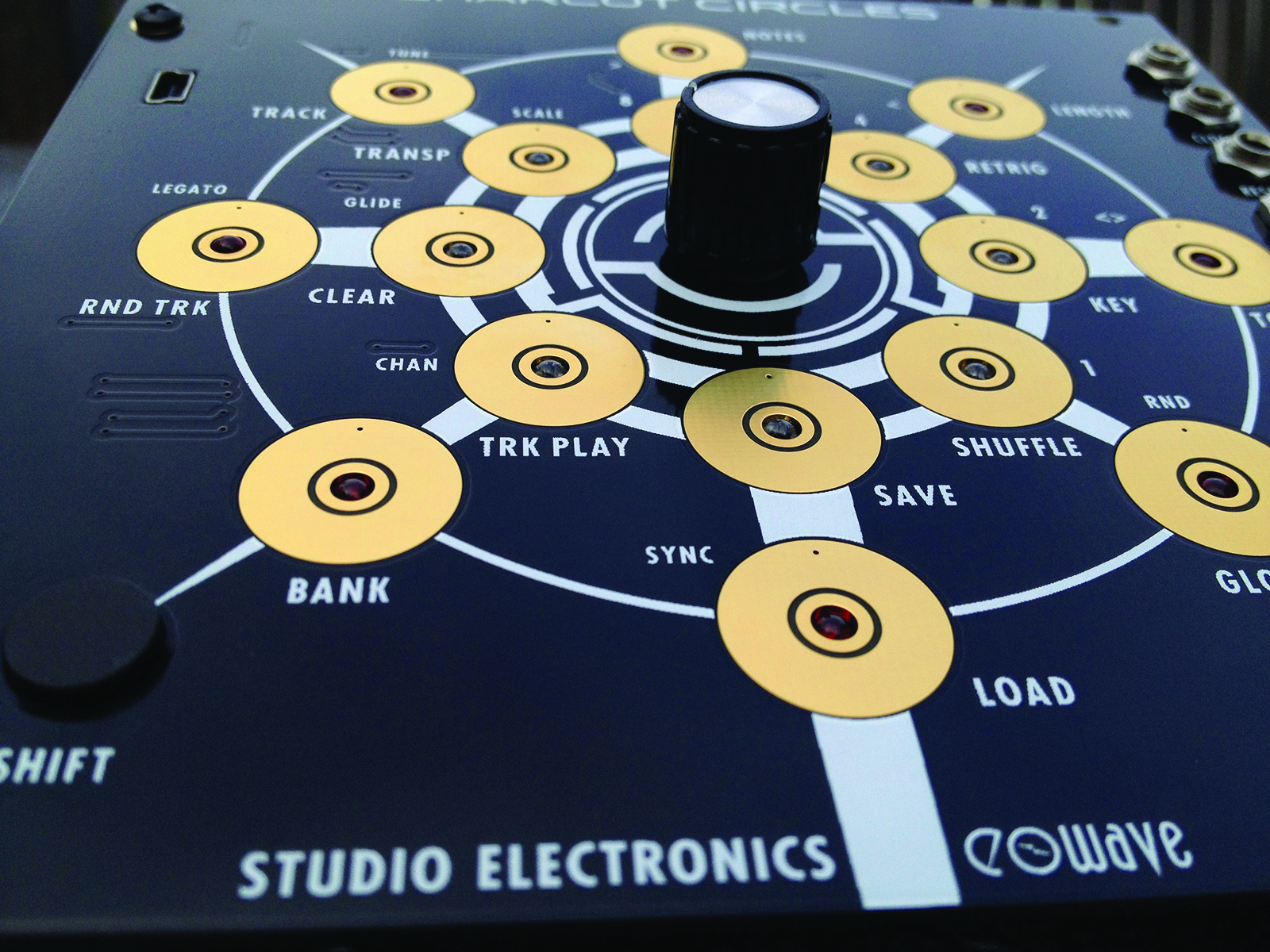
The Charcot Circles Eurorack module is a sequencer that offers a lot in a pint-sized package. Dave Gale discovers how hypnotic a sequencer can become…
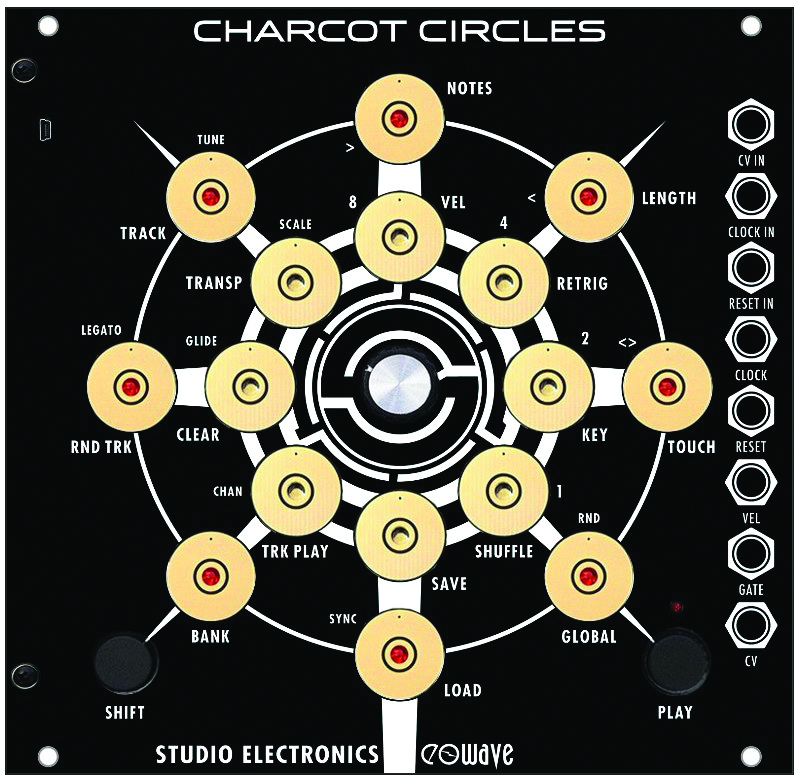
Details
Manufacturer Studio Electronics
Price £299 (RRP)
Contact MSL Professional – 0207 118 0133
Email contact@mslpro.co.uk – studioelectronics.com
![]()
Sequencers are a pretty essential part of modular life, so the appeal of a feature packed CV/Gate device in a small 26 HP footprint is pretty attractive. But with this shrinking in size, do you sacrifice functionality?
Dr Charcot (pronounced ‘Sharco’)
The circular design of the Charcot is inspired by Dr Jean-Martin Charcot, who was a French neurologist with an interest in many things psychological, including hypnosis. It’s easy to see the connection here when the sequencer is in full motion, as the LEDs adorning the front panel dance in a circular pattern, which is very hypnotic to watch, hence the connection with the name.
Displayed on the front panel, the Charcot has two circles, one inside the other, both of which are equipped with bright LEDs and rather wonderful touch-plates. These touch-plates serve as ‘buttons’ to allow programmability and settings to be tweaked, often requiring the additional press of the ‘shift’ button to access the appropriate parameter. Opposite the shift button is a delightfully clear ‘Play’ button, which throws the sequencer into life.
Starting with the basics, note access is reasonably easy, by pressing the appropriate step and then altering the CV/note to suit, via the rotary encoder which is right in the centre of the circles. As the rotary encoder is turned, the lights dance around the circles, giving a visual clue as to the note pitch.
Worth noting here that the 1/8th-note divisions are displayed via the outer circle, whereas the 16th-note divisions are displayed on the inner circle. This is quite cute, as it means that you can start with a nice clear 1/8th-note sequence and add the odd 16th note as required.
In addition to the basic note duties, there are other helpful options, such as note length, where the length can be increased to the full step length, or shortened as desired. A velocity amount can also be set, to allow the sending of a CV elsewhere in your rig, although I’d think of this as more an auxiliary CV, rather than anything to do with MIDI velocity. The Retrig option allows the repetition of a chosen step, with a sense of stutter, adding a useful element to the step programmability.
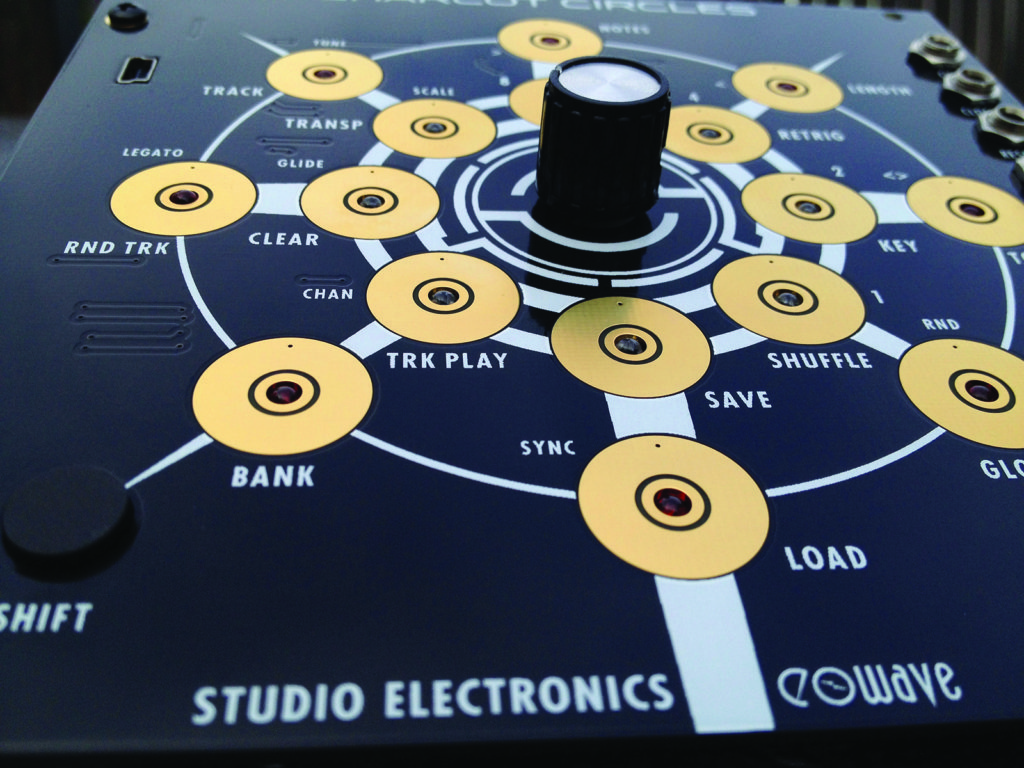
The induction plates add a ‘touchy feely’ element to the interface
Inner and Outer Circles
The inner/outer affair can also be used for note entry, turning both circles into a chromatic keyboard. There is no doubt that this requires a small degree of thought, but like all operational features, you do get used to it. In fact, it has to be said that I had concerns about my ability to work with the Charcot, on the basis that I’m so used to more traditional linear sequencers. Certainly, there is a real immediacy to a more traditional design which is lacking in the Charcot, but then the footprint of the unit is so small, comparatively, that it makes it an ideal choice for the smaller Eurorack.
In addition to the forward direction of travel that the sequence can play, there is also the option for reverse, pendulum (back and forth!) and random, all of which can prove useful in the right context.
Once familiar with the basics, such as navigation and note entry, it’s time to think about connectivity. Charcot Circles is no slouch, offering clock input and output, as well as a useful reset, so that you can restart those sequences from elsewhere in your modu lar. It is also equipped with a helpful CV in, allowing for a CV from elsewhere to transpose the operational sequence.
Under the hood, the flexibility in the way that sequences can be organised is comprehensive, although here again, there is plenty to get your head around, due to the nature of the circular display. Sequences can be saved and loaded in patterns, and these can consist of up to 128 steps. However, it is also possible to save smaller patterns, and have them play back in a song format, even simultaneously, to independent channels (see boxout). When you also throw in the comprehensive nature of the programming, allowing for glide, note length, shuffle and legato, it all adds up to a powerful package.
Breakout Modules
One of the unique elements of the Charcot is its ability to assign patterns in various ways. A single pattern can be up to 128 steps, but it can also be assigned to send up to eight (yes, eight!) separate CV/Gate signals of 16 steps, to different locations.
This effectively means that the Charcot could control eight independent sequenced patterns, using eight different oscillators, but in order to do this, two breakout modules will need to be purchased, each offering the ability to control four channels of CV/Gate. The breakouts are expected to be available by the summer of 2016, price TBC.
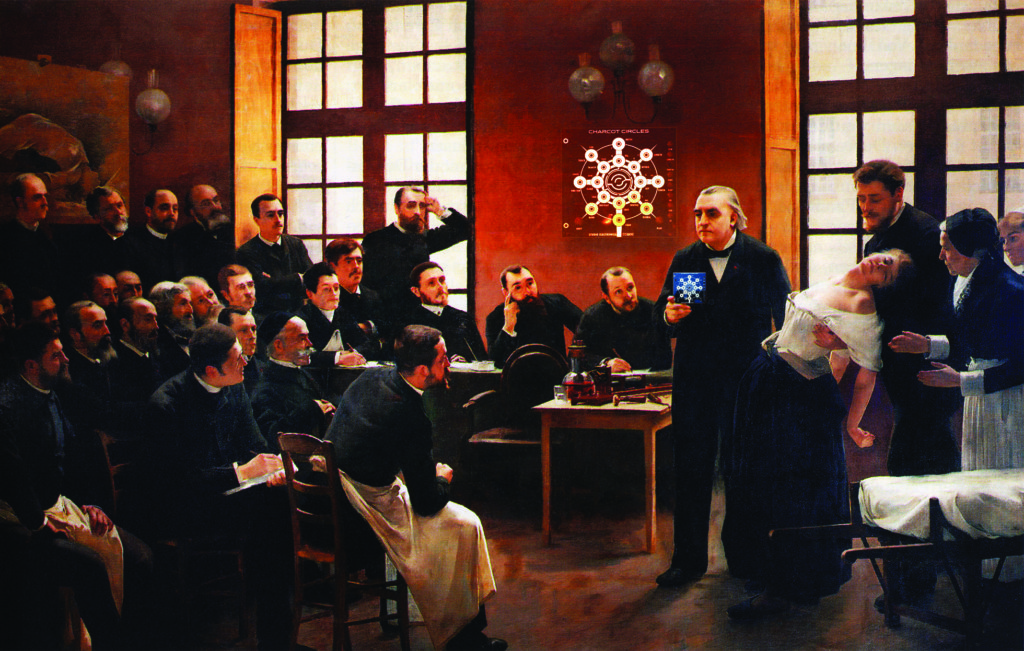
Dr Charcot demonstrating his theories of hypnosis with the help of Eurorack? (Note: possibly not historically accurate)
Alternatives
Every Eurorack should have a sequencer, possibly more than one, but there are surprisingly few Eurorack-based sequencers with the same degree of flexibility and functionality as the Charcot Circles.
The ubiquitous Arturia BeatStep Pro compares to Charcot Circles on functionality, but doesn’t fit in your rack, so if you must have something that you can hardwire, try the Intellijel Metropolis, which is a very high-spec sequencer, but with a price tag to boot. The forthcoming Pittsburgh Modular Lifeforms KB-1 offers a touch-plate keyboard and sequencer, all in one, which fits perfectly in your rack. We’ll be looking at these very soon. For something more cost effective, the Korg SQ-1 is hard to beat, although there will be no places to store your patterns.
Do You Really Need This?
The question here is more about whether you feel the design of the Charcot is right for you. Certainly, the Eurorack novice may well struggle with the design, so you might be better served looking for a more linear-based sequencer, of which there are plenty on the market, but you will find that just about all of these lack the programmability of the Charcot, a factor which may prove useful as you grow with your system.
Charcot Circles – Conclusion
At this price, this is a highly competitive module that packs an awful lot of design features in a small unit. The big selling point, in my view, is that it has the ability to save sequences and patterns, and recall them easily, along with an option for transposition.
This is something a more traditional analogue-style sequencer would not allow for so easily, and it is this ability that makes me think that the question before buying is: “do I need to save and recall sequence patterns?” If the answer is ‘yes’, then this is worth a look.
If not, the traditional ‘8/16 pot’ linear sequencer might be a better place to start, as the note entry will be quicker and more efficient. There are so many onboard features, the user will need to get to grips with the Global mode of operation in order to get the most from this unit, which will require a degree of patience. While its hidden depths might not be instantly obvious, with a little perseverance, the amount that this unit offers is undeniable.
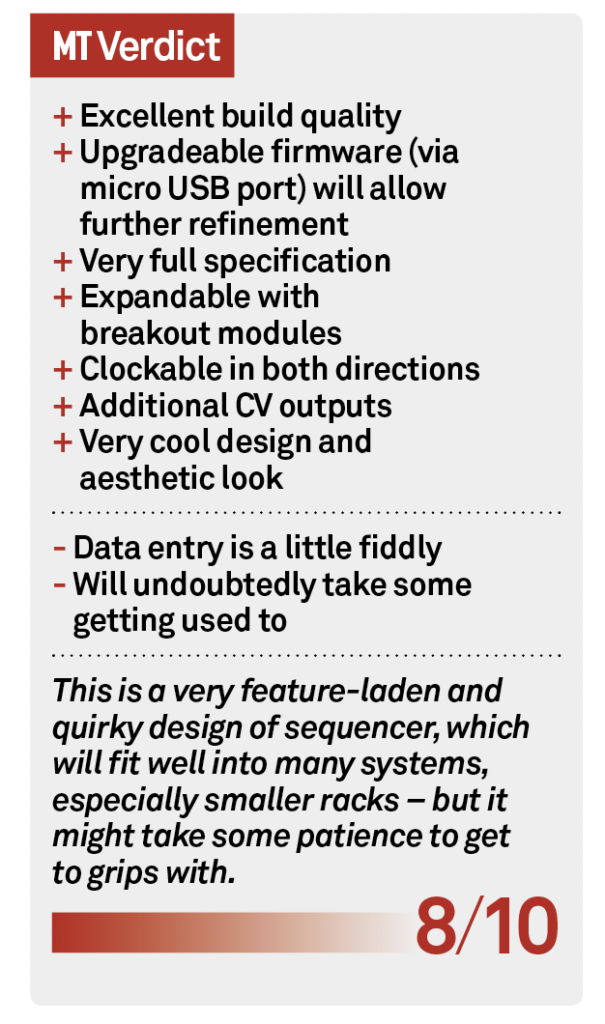
Features
● Fully featured Step Sequencer
● Assignable from 16 to 128 Steps
● Up to 128 memory locations, for storing patterns
● Width – 26 HP
● Current draw – 85mA
● Clockable as both master and slave
● Expandable to 8 CV/Gate outputs (via additional modules)


